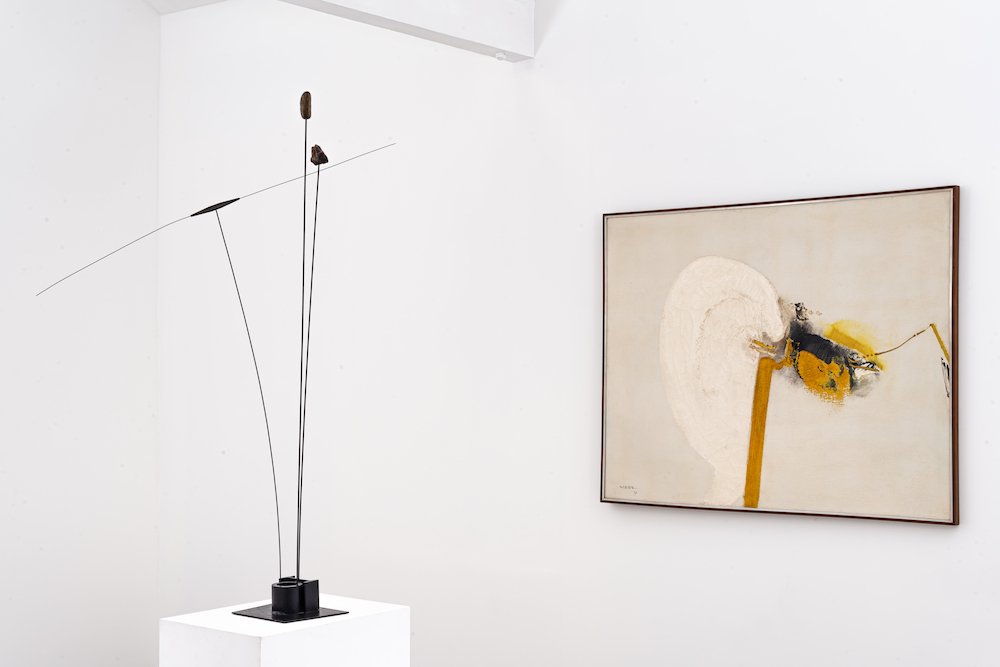This spring in London, new gallery space NISO opened its doors, offering a rear-view to art history’s 20th century, and the artists who, once found and acknowledged, have since been forgotten. It is an alternative modus operandi to the flock of new emerging and mid-sized galleries that have sprouted in the neighboring district of Fitzrovia in the last few years.
The gallerist behind it, Nicolas Sorbac, is fueled by a renewed interest in older, more established figures that—perhaps due to the fad-driven nature of the art scene—have fallen off our radar. His pairings match names we can find listed in the exhibition history of the Venice Biennale and the Tate Modern with those nascent to London’s emerging contemporary art scene. In the end, it’s about bringing a broader curatorial outlook, allowing for novelty through both the rediscovery of old names together with the discovery of new ones, feeding a wider, if not better, narrative to the audience.
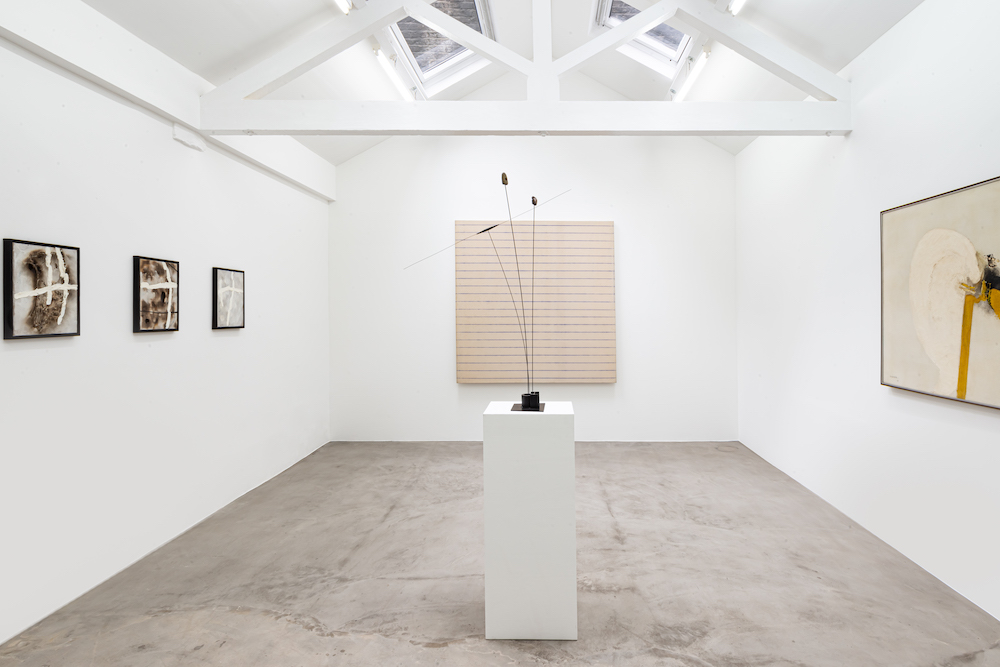
Installation view of NISO Gallery’s inaugural show, courtesy of NISO.
A Focus on the Seasoned Artist to Re-Evaluate the Present
While singular for a gallerist so young and new on the stage, the resurfacing of old, somewhat forgotten names is by no means a unique phenomenon. According to Bartomeu Marí, Director of Seoul’s National Museum of Modern and Contemporary Art, “One of the categories that has seen the greatest consolidation in the last fifteen years is that of the seasoned (or dead) artist whose work is positively re-evaluated in the present.”
Galleries and museums are bringing waves of second acts for artists who, for some reason or another, have languished in obscurity for long enough. Instances of this include names like Carmen Herrera to established museums (The Whitney Museum of American Art in 2016) and commercial galleries (Lisson in New York in 2016) setting a trend that today seems to have trickled down to the scene of emerging galleries in London.
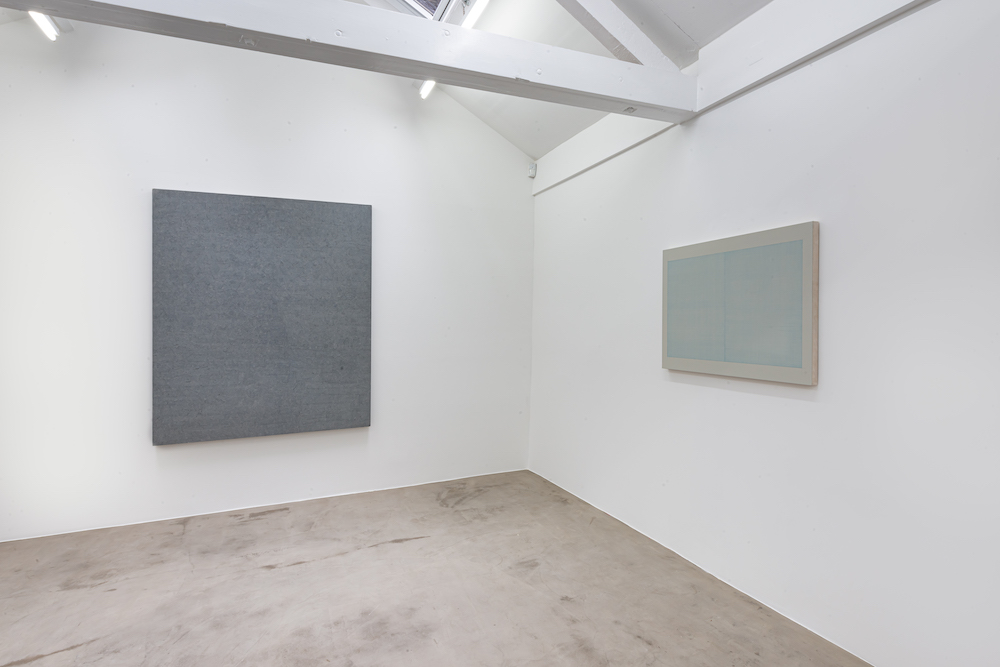
Installation view of NISO Gallery’s inaugural show, courtesy of NISO.
NISO Gallery’s Inaugural Show in London
Trend or not, the installation on view at NISO’s 110 New Cavendish St. location (up through April 20) leaves little fuss for us to contend with. As you walk in, stillness, and the confounding eloquence of minimalistic lines and monochrome works permeate through the two adjacent subtly sun-lit rooms. Pulling together pieces spanning five decades of contemporary painting and sculpture, the exhibition speaks to the “functionality” of the line, placing established 20th artists side by side with contemporaries from today’s art scene. Various themes and techniques that encapsulate the sum and substance of the show include the search for balance and tension, the incorporation of industrial processes or materials in the creative act, the concept of materiality.
Imparting synergetic reverberations and tenuous contrasts that bounce off each other, heightening their energetic zeal, the mostly minimalistic and monochrome work give way to an intergenerational crossover as the viewer’s gaze oscillates from the straight and oblique lines of Hitoshi Nakazato (1936-2010) and Claude Chaussard (b. 1954) to the weightless structure of Takis’s (1925-2019) tele-magnetic sculpture, to the impalpable hatchings of Max Wechsler (1925-2020) and Nanami Inoue (b. 1996) that melt into atmospheric compositions.
Pulsating with a meditative atmosphere, the works synchronize in a dynamic play of vibration, movement, and stillness, which in their cumulative harmony and simplicity echo some of the most embryonic preconceptions of the gallery’s nomadic exhibition history, the desire to create a dialogue between Western modernism and traditional Japanese aesthetics.
For the inaugural show at NISO’s first permanent space in London, the gallery’s nomadic exhibition history is referenced, most notably their first installation which had surfaced out of the desire to create a dialogue between Western modernism with traditional Japanese aesthetics. In the days following the opening, we spoke to Sorbac about his vision and what audiences can expect from the space in the future.
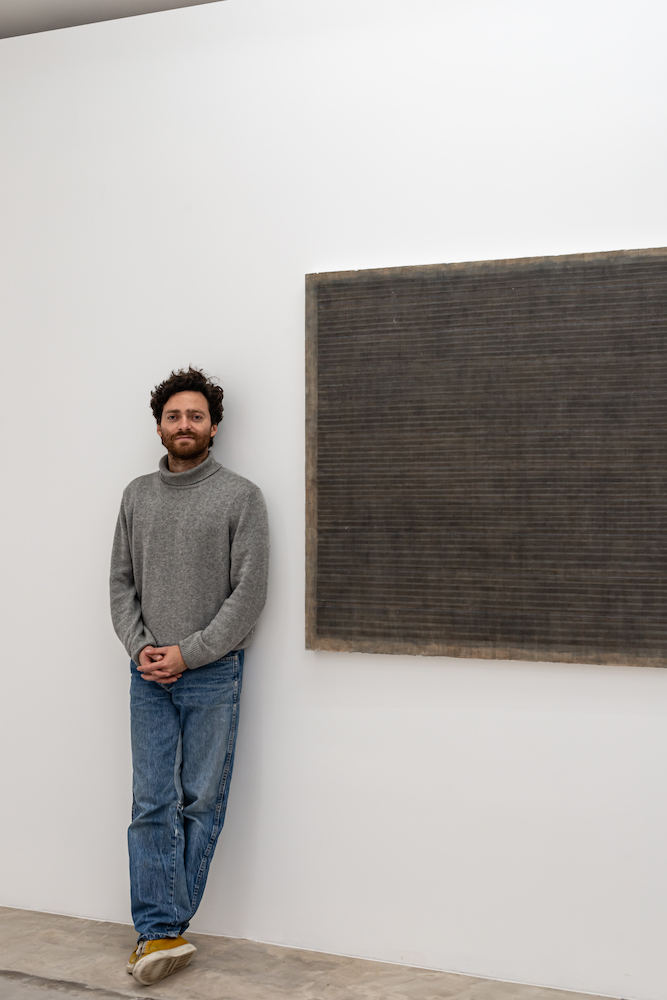
Nicolas Sorbac, courtesy of NISO.
WHITEWALL: Tell us about your background. How did you come to launch NISO?
NICOLAS SORBAC: Well, I certainly didn’t go to art school. I wasn’t predestined to work in the art world. I went to university and studied business, and subsequently, I started my career in a start-up company. I was using my degree to do what I was trained to do which was business development. That was in France in 2016 or 2017. After a while, I didn’t find it very interesting.
Eventually, I left that job and one of the things I sought to find was something that would provide endless opportunities for constant learning and discovery. Art proved to be that. I devised a plan of how I could come to work in the arts. I started by educating myself, correcting my own lack of knowledge so to speak with regards to art history. I read Serge Lemoine, Catherine Millet, E. H. Gombrich, the classics. Then, I started working in a really great gallery in Paris called Xippas.
Mr. Xippas had a roster of artists that were unique to him. He’s half Uruguayan, half Greek. He showed a lot of Latin American artists and Greek masters such as Takis. He really had an acute eye. And the way that he championed his artists was inspiring to me.
I stayed there for like a year and a half. But I was a bit dissatisfied with Paris. And, I had this very weird calling for London, for some reason. I managed to get a meeting with Christie’s about a position in the post-war and contemporary art section, and, to my surprise, I got the job.
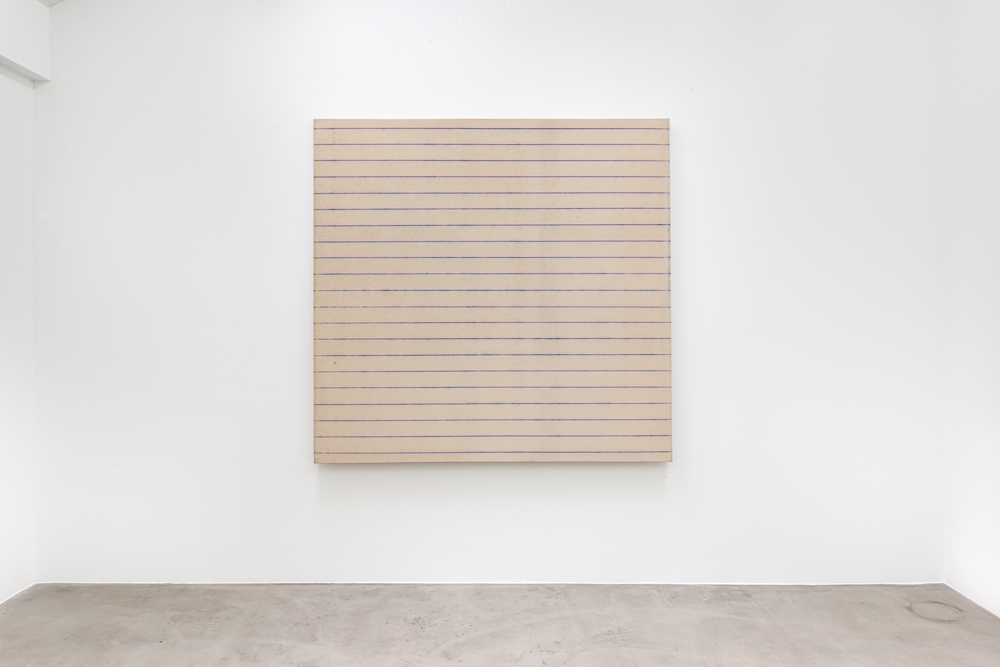
Installation view of NISO Gallery’s inaugural show, courtesy of NISO.
“That’s how NISO came about, from the willingness to create a curatorial dialogue between Japan and the West,” — Nicolas Sorbac
I took my things and left for London, but the day the job started, the pandemic broke out. I was like, what am I going to do? I’ve always wanted to create something of my own. I never thought it was going to be in the arts, but I guess it all sort of converged to that moment. And so, I started organizing myself. I’ve always been passionate about Japan. Japan has this mysticity that I have only found there. While I was there, I got to meet a of artists, dealers, and collectors. I met great Japanese ceramicists.
The very first exhibition I curated on my own included Japanese ceramicist Yuki Nara. To me his work embodies what Japan is: a blend of tradition and modernism. He comes from a very long lineage of potters and being the eldest son in a traditional Japanese family, he had to do what his father did. But the thing is that Yuki was always interested in architecture. And, he actually went to study architecture and then found a very clever way to combine it with his family’s legacy in pottery.
I thought it would be interesting to show what’s being done over in Japan. And, right around the same time, upon arriving in London, I had met through a friend of mine, another great artist that has stuck with me ever since. Daniel Brusatin. He also had suffered from the pandemic and had a whole show that was ready to be shown in Japan. The whole production of his work was made having Japan in mind. And so, very naturally we got together, and put up this first show, a convergence of ideas between Yuki and Daniel. So, that’s how NISO came about, from the willingness to create a curatorial dialogue between Japan and the West.
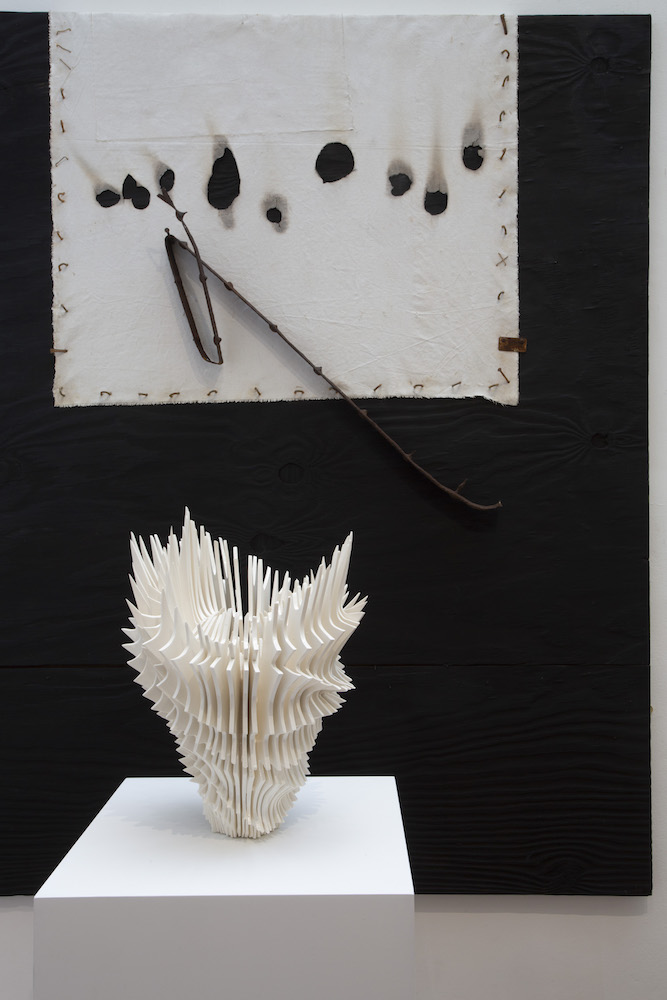
Work by Yuki Nara and Daniel Brusatin, courtesy of NISO.
WW: Can you tell us about your inaugural exhibition, on view now? How it will set the tone for the gallery? What is your vision for the gallery?
NS: So, this exhibition is a group show where 11 different artists are in conversation. The curation has a very clear minimalist aesthetic. It was important for me for this first exhibition to show the panorama of the gallery’s artists. One focus of the gallery in the long term is going to be rediscovering 20th-century artists who had a successful career when they were alive, who were acclaimed internationally and for some reason or another have completely fallen into oblivion today.
Manabu Mabe for instance. A pioneer in Brazilian gestural abstraction, a Venice Biennale laureate. I first heard about him during a studio visit of a Brazilian artist in Paris. And ever since then, I’ve had a complete obsession with him. I even went to Brazil to meet with the family and today I’m extremely excited to be presenting a work of the artist.
And the second focus of the program is the next generation of artists. After all, I want to show the art of my time. So, out of the 11 artists we’re showing, seven of them worked from the ‘60s through the ‘90s. Some of them have been featured at museums such as the Solomon R. Guggenheim, others have been awarded at Sao Paulo and Venice Biennales, and some are at the flower of age and active in the thriving Japanese art scene.
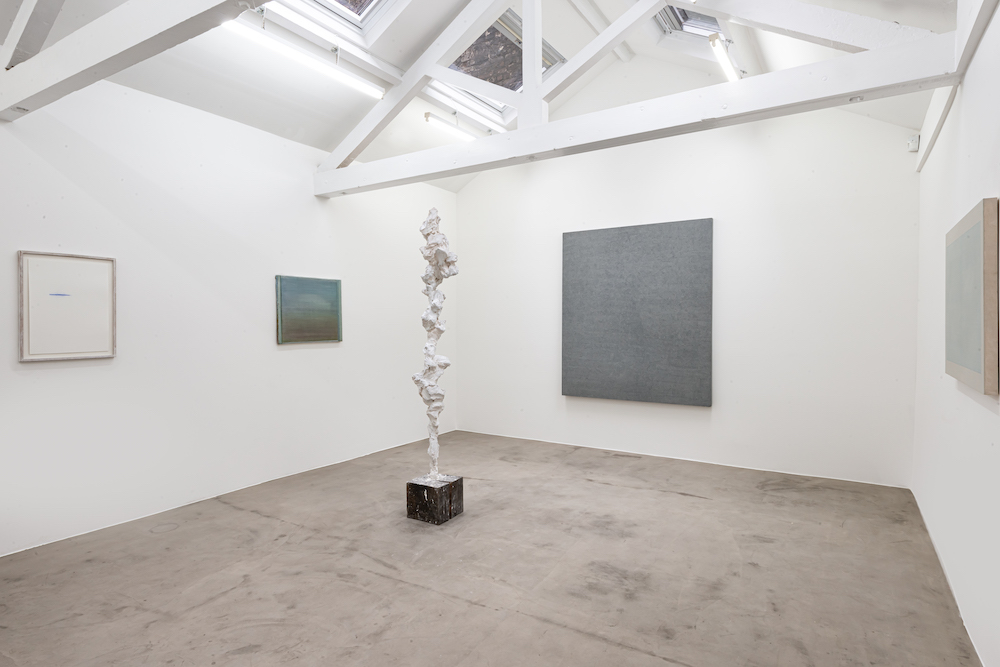
Installation view of NISO Gallery’s inaugural show, courtesy of NISO.
NISO Offers a Wider Narrative of the Art World
WW: Why is this something important to you and how you see it enriching your program?
NS: I think it is important and enriching because it adds to the wider narrative. Like, for a particular movement that shaped the 20th century, of course, we’re all very aware of who the pioneers or best representatives were, but I don’t think that by any means reflects the entirety of what was being done within the confines of that movement. I think that by showing these artists that have been forgotten it adds to the narrative. It enhances it, it makes it more complete. How do you combine the historical artists with the more emerging artists when you create, together, a show?
I think an interesting point of discussion in this exhibition is the function of the line. For instance, the lines in the work of Nakazato from 1970 hold the power of equally dividing the picture plane. In the work of young artist Nanami Inoue, lines are intertwined, creating a tightly knit web, exuding an almost atmospheric feel. If you look at the work of Eve Gramatzki from 1995, lines blend with their environment. These artists all lived during very different historical times, sometimes continents apart, and their preoccupation was the same: what function has the line?
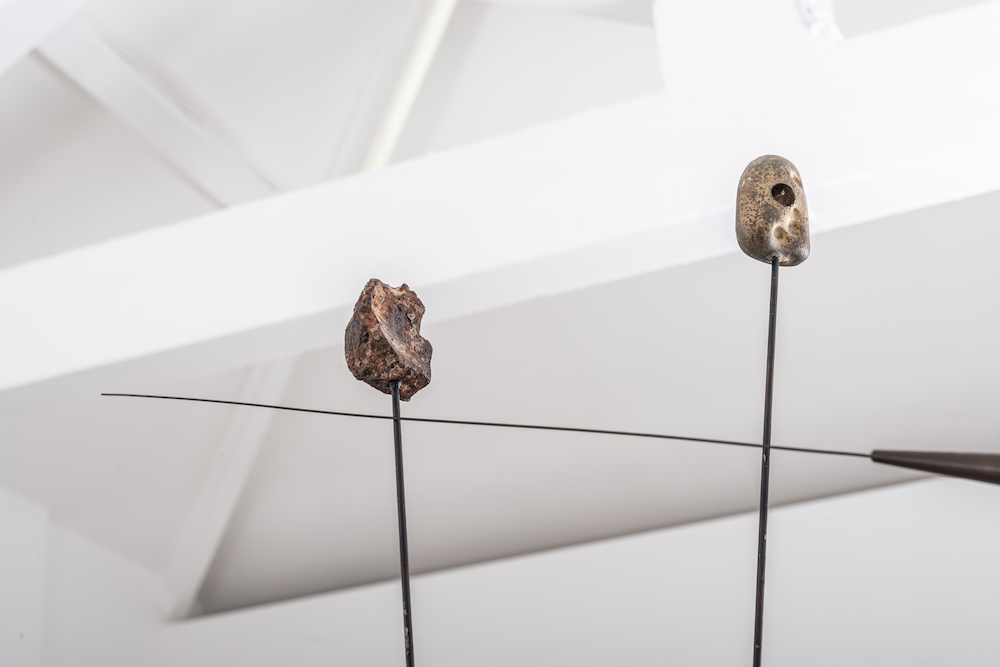
Installation view of NISO Gallery’s inaugural show, courtesy of NISO.
WW: With this in mind, which are the artists who fit this ethos that you are most interested in presenting?
NS: Well, as I mentioned, for the past four years I’ve been obsessed with Manabu Mabe. Now Mabe has a very interesting personal story. His family emigrated to Brazil in the 1930s to work on the coffee plantations. Brazil was experiencing a shortage of workforce and sought it from Japan. This is the main reason why today there is such a huge Japanese community in Brazil. The Mabe family was one of the first to settle in the province of Lins near Sao Paulo. Completely self-taught, he would paint during the night or whenever it rained. He started showing his work in the 1940s with a Nippo Brazilian artist group called the Grupo Seibi.
Mabe eventually became the president of that group. And essentially one of the artists in this group suggested that he present a work at the Sao Paulo Biennale, which came to happen in 1957, then again in 1959 at the fifth Sao Paulo Biennale. And, Guess what? He was awarded the Best National Painting Prize. Unheard of at the time being of Japanese descent. The Brazilian president at the time, Juscelino Kubitschek, personally handed him the prize, and a few months later, the passport. He was then able to participate, as a Brazilian, to the XXXth Venice Biennale in 1960 for which he also was awarded the Fiat Prize. A pioneer in lyrical abstraction, from the coffee plantation to the collection of David Rockefeller, his life I only know so little, and yet I am so inspired by it.
WW: How would you describe the aesthetic of your exhibit displayed here today and the key artistic themes & practices it engages?
NS: I think this exhibition draws on minimalist aesthetics. I particularly like that most pieces are monochromatic. I really like how all these different monochromes resonate with each other in the space. I think this exhibition also explores the notions of balance, equilibrium, and tension. I love the dialogue between the Takis mobile and the lines of Nakazato.
If you think of it this way, Nakazato used a Japanese line marking tool called a sumitsubo to make these lines, so essentially using tension. The horizontal lines in turn provide a sense of equilibrium to the work as they almost divide the picture plain equally and Takis’ mobile is just essentially, I think trying to find a certain equilibrium and stillness with wires and found objects.
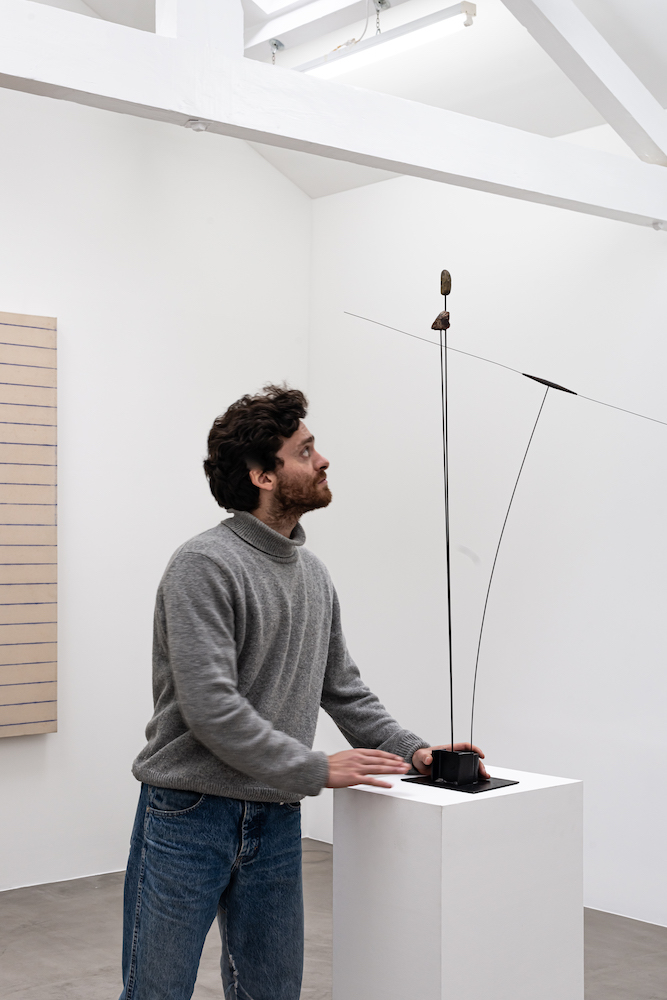
Nicolas Sorbac, courtesy of NISO.
NISO’s Upcoming Exhibitions with Guy Haddon Grant and Patrick Procktor
WW: What is on the horizon for NISO?
NS: More young artists and more rediscoveries. Immediately after this exhibition, we are presenting a solo show of British sculptor Guy Haddon Grant, which I am really excited about because he’s been working on a series of plaster totems, very material and dense and I can’t wait to fill the space with them. I love the physical relationship to his work. Funnily enough, all of his pieces are monochromatic as well, all painted white plaster.
Our upcoming solo show of Patrick Procktor is also something I am very excited about. He was a great British artist who made watercolor his medium of predilection (thanks to Hockney) and a great friend of Hockney, they were their respective muses, and to me a great representative of London’s thriving art scene of the 1960s and ‘70s. What I am trying to do is bring a refreshing look at the past and a refreshing look at what’s being made today, following the gallery’s aesthetical parameters.



